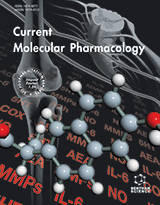Abstract
Mitosis of somatic cells produces a daughter cell. Apoptosis, a naturally programmed cellular death mechanism, kills abnormal cells produced by mitosis. Cancer can develop when this equilibrium is disrupted, either by an upsurge in cell propagation or a reduction in tissue demise. Cancer therapy aims to cause cancer cells to die while inflicting little harm to healthy cells. This review of apoptotic mechanism processes improves our understanding of how certain malignancies begin and develop. The current cancer treatments can operate either by inducing apoptosis or causing direct cell damage. An insight into the resistance to apoptosis may explicate why malignancy treatments fail in some situations. New therapies grounded on our understanding of apoptotic processes are being developed to induce apoptosis of cancer cells while limiting the simultaneous death of normal cells. Various biological activities require redox equilibrium to function properly.
Antineoplastic medications that cause oxidative stress by raising ROS and blocking antioxidant mechanisms have recently attracted much interest. The rapid accumulation of ROS impairs redox balance and damages cancer cells severely. Here, we discuss ROS-instigating malignancy therapy and the antineoplastic mechanism used by prooxidative drugs.
Current Molecular Pharmacology
Title:Molecular Insight into the Apoptotic Mechanism of Cancer Cells: An Explicative Review
Volume: 17
Author(s): Dipanjan Karati and Dileep Kumar*
Affiliation:
- Poona College of Pharmacy, Pune 411038, India
Abstract:
Mitosis of somatic cells produces a daughter cell. Apoptosis, a naturally programmed cellular death mechanism, kills abnormal cells produced by mitosis. Cancer can develop when this equilibrium is disrupted, either by an upsurge in cell propagation or a reduction in tissue demise. Cancer therapy aims to cause cancer cells to die while inflicting little harm to healthy cells. This review of apoptotic mechanism processes improves our understanding of how certain malignancies begin and develop. The current cancer treatments can operate either by inducing apoptosis or causing direct cell damage. An insight into the resistance to apoptosis may explicate why malignancy treatments fail in some situations. New therapies grounded on our understanding of apoptotic processes are being developed to induce apoptosis of cancer cells while limiting the simultaneous death of normal cells. Various biological activities require redox equilibrium to function properly.
Antineoplastic medications that cause oxidative stress by raising ROS and blocking antioxidant mechanisms have recently attracted much interest. The rapid accumulation of ROS impairs redox balance and damages cancer cells severely. Here, we discuss ROS-instigating malignancy therapy and the antineoplastic mechanism used by prooxidative drugs.
Export Options
About this article
Cite this article as:
Karati Dipanjan and Kumar Dileep*, Molecular Insight into the Apoptotic Mechanism of Cancer Cells: An Explicative Review, Current Molecular Pharmacology 2024; 17 : e18761429273223 . https://dx.doi.org/10.2174/0118761429273223231124072223
| DOI https://dx.doi.org/10.2174/0118761429273223231124072223 |
Print ISSN 1874-4672 |
| Publisher Name Bentham Science Publisher |
Online ISSN 1874-4702 |

- Author Guidelines
- Bentham Author Support Services (BASS)
- Graphical Abstracts
- Fabricating and Stating False Information
- Research Misconduct
- Post Publication Discussions and Corrections
- Publishing Ethics and Rectitude
- Increase Visibility of Your Article
- Archiving Policies
- Peer Review Workflow
- Order Your Article Before Print
- Promote Your Article
- Manuscript Transfer Facility
- Editorial Policies
- Allegations from Whistleblowers
- Announcements




























